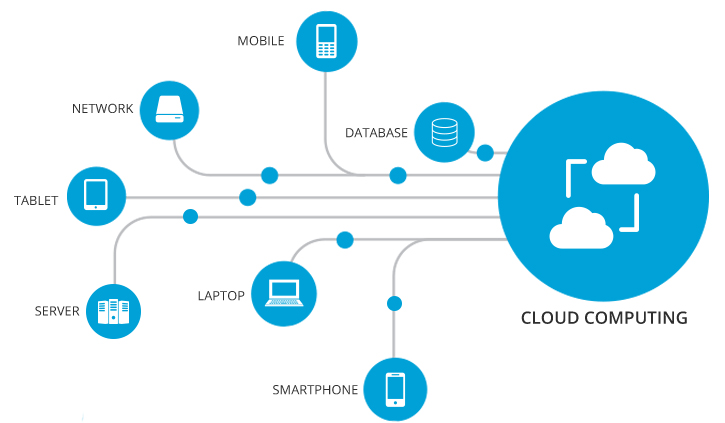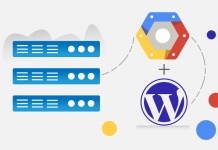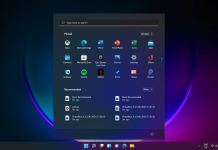What is Cloud Computing? Its Different Types and Deployment Models With Virtualization in Cloud Computing
Cloud computing, often referred to as simply “the cloud,” it is the delivery of different services through the Internet. Everything from applications to data centers, over the internet on a pay-for-use basis.
These resources include tools and applications like data storage, servers, databases, networking, and software.
Why it is called Cloud Computing
Cloud computing is named as such because the information being accessed is found remotely in the cloud or a virtual space. A fundamental concept behind cloud computing is that the location of the service, and many of the details such as the hardware or operating system on which it is running, are largely irrelevant to the user.
Companies that provide cloud services enable users to store files and applications on remote servers and then access all the data via the Internet. This means the user is not required to be in a specific place to gain access to it, allowing the user to work remotely.
Platform as a service (PaaS)
Types of Cloud Computing
Platform as a service provides a cloud-based environment with everything required to support the complete lifecycle of building and delivering web-based (cloud) applications — all without the cost and complexity of buying and managing the underlying hardware, software, provisioning, and hosting.
Benefits of PaaS:
- Develop application and get to market faster
- Deploy new web applications to the cloud in minutes
- Reduce complexity with middleware as a service
Infrastructure as a service (IaaS)
Infrastructure as a service provides companies with computing resources—including servers, networking, storage, and data-center space—on a pay-per-use basis.
Benefits of IaaS:
- No need to invest in your own hardware
- Infrastructure scales on demand to support dynamic workloads
- Flexible, innovative services available on demand
Software as a service (SaaS)
Cloud-based applications—or software as a service, probably the version of cloud computing that most people are used to on a day-to-day basis. It runs on distant computers “in the cloud” that are owned and operated by others and that connect to users’ computers via the internet and (usually) a web browser.
Benefits of SaaS:
- You can sign up and rapidly start using innovative business apps
- Apps and data are accessible from any connected computer
- No data is lost if your computer breaks because the data is in the cloud
- The service is able to dynamically scale to usage needs
What Is Cloud Computing deployment model and its Types
Cloud deployment refers to the enablement of SaaS (software as a service), PaaS (platform as a service) or IaaS (infrastructure as a service) solutions that may be accessed on demand by end users or consumers.
Public cloud
Public cloud is the classic cloud computing model, where users can access a large pool of computing power over the internet (whether that is IaaS, PaaS, or SaaS).Public clouds are owned and operated by companies that offer rapid access over a public network to affordable computing resources. The cloud computing suppliers have vast amounts of computing power, which they share out between a large numbers of customers — the ‘multi-tenant’ architecture.
With public cloud services, users don’t need to purchase hardware, software or supporting infrastructure, all of which is owned and managed by providers.
Characteristics of cloud computing
Key aspects of public cloud:
- Gives access to innovative SaaS business apps for applications ranging from customer resource management (CRM) to transaction management and data analytics
- Allows for flexible, scalable IaaS for storage and compute services at a moment’s notice
- Enables powerful PaaS for cloud-based application development and deployment environments
Private cloud
Private cloud allows organizations to benefit from the some of the advantages of public cloud — but without the concerns about relinquishing control over data and services, because it is tucked away behind the corporate firewall. A private cloud is infrastructure operated solely for a single organization, whether managed internally or by a third party, and hosted either internally or externally.
Private clouds can take advantage of cloud’s efficiencies while providing more control of resources and allowing clients to steer clear of multitenancy.
Key aspects of a private cloud:
- Gives self-service interface controls services, allowing IT staff to quickly provision, allocate and deliver on-demand IT resources
- Facilitates highly automated management of resource pools for everything from compute capability to storage, analytics and middleware
- Provides sophisticated security and governance designed for a company’s specific requirements
Hybrid cloud
A hybrid cloud uses a private cloud foundation combined with the strategic integration and use of public cloud services. The reality is that a private cloud can’t exist in isolation from the rest of a company’s IT resources and the public cloud. Most companies with private clouds will evolve to manage workloads across data centers, private clouds, and public clouds, thereby creating hybrid clouds.
Key aspects of hybrid cloud:
- Allows companies to keep critical application and sensitive data within a traditional data center environment or private cloud
- Enables taking advantage of public cloud resources like SaaS for the latest applications and IaaS for elastic virtual resources
- Facilitates portability of data, apps and services and more choices for deployment models
Multicloud
Many businesses employ various cloud services to drive innovation and aid business agility, such as creating new revenue streams, adding products and services, and increasing margins. Because of such wide-ranging and valuable potential advantages, multi-cloud environments are essential to survival and success in the digital era.

Key aspects of multi-cloud:
- Eighty-five percent of companies are already operating in multi-cloud environments. Adding to the complexity, the majority of these environments are comprised of multiple hybrid clouds. Hybrid clouds can connect one or more public, private, or hybrid clouds to on-premise systems and can network one or more clouds to other clouds.
- Seventy-six percent of organizations report they are already using at least 2 to 15 hybrid clouds, and 98 percent forecast they will be using multiple hybrid clouds within three years.
What is cloud computing adoption doing to IT budgets?
Cloud computing tends to shift spending from capital expenditure (CapEx) to operating expenditure (OpEx) as companies buy computing as a service rather than in the form of physical servers. This may allow companies to avoid large increases in IT spending which would traditionally be seen with new projects; using the cloud to make room in the budget may be easier than going to the CFO and looking for more money.
Join Telegram Group of Daily Jobs Updates for 2010-2023 Batch: Click Here
If You Want To Get More Daily Such Tech Updates, Career Advice Then Join the Telegram Group From Above Link And Never Miss Update.
Wipro Elite NLTH 2021 Registration: Click here
Accenture Hiring Freshers of Package 4.5 LPA Across India: Click here
Why You’re Not Getting Response From Recruiter?: Click here
Top 5 High Salary Jobs in India IT Sector 2020: Click here
How To Get a Job Easily: Professional Advice For Job Seekers: Click here
A Leadership Guide For How To Win Hearts and Minds: Click here
COVID-19 Live Tracker India & Coronavirus Live Update: Click here
Career Tips for Freshers: Top 7 Hacks To Land Your Target Job: Click here
Top 5 Best Indian Car Launches In December ahead: Click here
Feel Like Demotivated? Check Out our Motivation For You: Click here
Top 5 Best Mobile Tracking App in 2021 For Mobile & PC: Click here
5 Proven Tips For How To Look Beautiful and Attractive: Click here
Home Workouts During The Lockdown For Fitness Freaks: Click here










































